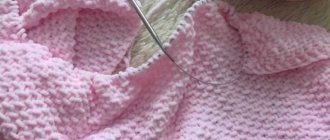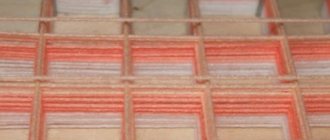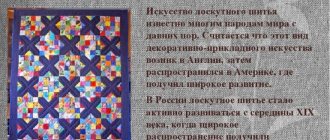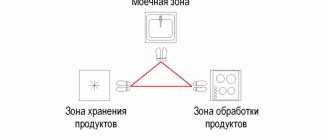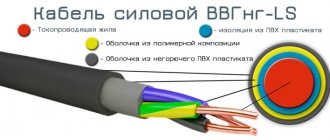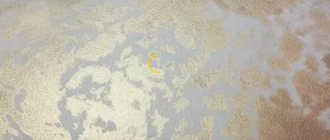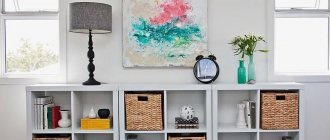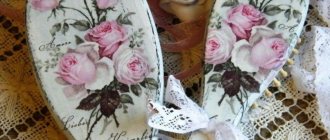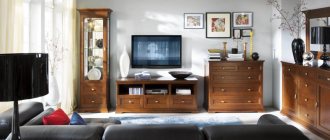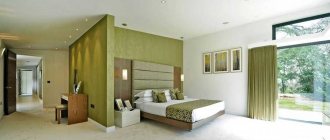12/27/2019 Category: Bedspreads
- 1 Features of work
- 2 Functionality of blankets
- 3 Cons
- 4 Types
- 5 Techniques and patterns
- 6 Materials
- 7 Colors
- 8 Dimensions
- 9 Styles
- 10 How to choose
- 11 How to care
- 12 Options in the interior
- 13 How to knit a blanket
- 14 Benefits of DIY
- 15 Required materials and tools
- 16 How long to knit by time
- 17 How much yarn is needed for a blanket
- 18 Conclusion
Interior knitwear is a broad topic for lovers of needlework, especially when it is a knitted blanket or bedspread. It’s easy to make a cozy cover for a chair with your own hands. You won't need a complicated pattern unless it's a mermaid tail blanket or other themed item for a child. The technique is selected according to the level of skill and the yarn available.
Features of work
Handmade knitted bedspreads are a luxury. Not every craftswoman will undertake to create a New Year's blanket with a jacquard pattern. The huge fabric takes a long time to move forward - loop by loop (knitting needles) or column by column (hook).
The lengthy process can take a long time; some masterpieces take years to knit. Something similar can be seen in museums. For example, a plaid with a small pattern knitted by serfs in the Turgenev estate (the village of Spasskoye-Lutovinovo, Oryol region), which took 2 years to knit.
There are techniques for speeding up the production of large knitted fabrics. For an ultra-fashionable blanket without knitting needles or a hook, they even developed mega-yarn of great thickness so that the work progresses faster. This knitted blanket can be completed in 1-2 days.
Note! The thicker the yarn and the larger the number of knitting needles or hook, the less time will be spent on the model you like.
Volumetric patterns will require a lot of yarn consumption. The consumption rate for a blanket “10 out of 10” is 1 large skein. Standard – 1.5-2 kg, sometimes less or more.
Functionality of blankets
Large handmade panels are used in different ways. It’s nice to wrap yourself in them in the winter after work while watching TV, reading something or knitting while listening to quiet music.
When it's warm, a blanket made from a pleasant-to-touch yarn will serve as a substitute for a light blanket. Any variety will serve as a beautiful cover for a bed or chair.
You can choose a fun children's blanket made from soft knitted yarn. The windows where monkeys, bunnies or kittens have successfully “registered” will look funny. They are suitable for beginners because they are small in size. A knitted baby blanket for a newborn serves as a plush blanket in the stroller, but is then used to decorate the baby’s room.
Children's blanket "Bunny"
Blankets made of synthetic materials
The main advantages of synthetic blankets are their high wear resistance and affordable price. Thanks to the variety of synthetic fibers, products attract an abundance of design options, structure and colors of the fabric.
Made from acrylic fiber
Externally, blankets made of acrylic thread resemble woolen ones: quite soft to the touch, with a pleasant fluffiness, light and breathable. The color range is extremely varied, the design is predominantly traditional: a rectangular woven panel with a long fringe. Acrylic blankets are easy to wash and dry quickly; they can be machine washed, however, over time, pellets may appear on the surface, spoiling the appearance.
Acrylic fibers do not absorb moisture, so using the blanket as a blanket is not recommended. However, the disadvantages of synthetic fiber are made up for by their low cost. This is an ideal option for a picnic, cottage or trip: even if the fabric gets very dirty, it will not be difficult to wash it.
Made from microfiber
Polyamide or polyester fiber, called microfiber (microfiber), has a special fluffy structure that provides excellent hygroscopicity, softness and comfortable warmth. Light, cozy and inexpensive, the blanket is extremely durable and can withstand repeated washing in the machine, and dries quickly after spinning. It can be used as a blanket or bedspread, or taken on the road or to the country house. However, frequent washing leads to loss of appearance, although the product still remains quite warm and soft.
Made from fleece
Voluminous and lightweight fleece is excellent for making blankets. It is quite durable, does not fade in the sun, retains heat well, and washes well. If necessary, a fleece blanket can be dry cleaned, steamed or ironed. Fleece fiber is made from polyester, so it does not cause allergic reactions even in sensitive people. The material is prone to the accumulation of static charges and therefore requires periodic treatment with an antistatic agent. A fleece blanket can be used as a blanket, used to cover beds, and taken with you on the road or to the country house.
Faux fur
The undoubted advantages of faux fur blankets include, first of all, their luxurious appearance, soft structure and high wear resistance. The products are produced in a wide variety of colors and textures, imitating the play of shades of natural fur or being a plain fabric. In addition, fur blankets are very warm and relatively light.
Unlike natural furs, artificial pile is not afraid of moths and moisture, and can be washed infrequently by machine. The disadvantage of the products is their tendency to electrify. In addition, long pile attracts and collects dust, so the blanket needs frequent beating and vacuuming. A fur blanket looks great as a bedspread or a spectacular throw on a sofa or chair.
Knitted blankets
As a rule, synthetic or blended yarn is used to make knitted blankets. Typically, acrylic or polyester fiber is used for this, since these synthetic threads are structurally similar to natural wool. The finished product looks very cozy and attractive and retains heat perfectly. A knitted blanket is thrown over the bed instead of a bedspread, draped over a sofa or chair, and wrapped in it when it gets cold. You should not take a knitted blanket on a trip or on a picnic, as frequent washing is detrimental to it.
Minuses
- Prolonged painstaking work can cool interest. Large knitted fabrics have a chance of becoming “lanky” or “undersized”, which craftswomen often complain about.
- Large yarn consumption is a significant expense. The best solution is a blanket made from leftover yarn of different colors, but they rarely have artistic value.
- Two or three kilograms of yarn (or more) is a beautiful, but heavy product. They don’t even take it off the double bed at night, rolling it into a roll. They are left at the feet or under pillows, which is not always convenient.
- Many varieties of yarn do not hold their shape well, especially a blanket knitted with a loose pattern.
Fleece blankets
A very good alternative to products made from natural materials. Fleece fabric is made from polyester, a synthetic material that has a number of advantages.
Advantages:
- Resistance to mechanical stress and high temperatures;
- Retains color when exposed to sunlight;
- Does not cause allergic reactions;
- Wear resistance;
- They do not wrinkle, do not fade and are resistant to washing in a washing machine, as well as dry cleaning and ironing;
- Not of interest to moths and microorganisms;
- They absorb moisture, but remain dry, since water evaporates very quickly;
- Suitable for home, garden and travel.
Minuses:
- The only drawback of these blankets is the ability to accumulate static electricity, which is easily solved by rinsing with any antistatic conditioner.
Types
Depending on seasonality, knitted blankets and wicker bedspreads are classified:
- winter varieties (made from fluffy warm wool, goat down, cashmere, llama or alpaca);
- openwork knitted summer blankets (made of threads with a cooling effect - cotton, linen, viscose);
- all-season bedspreads (from mixed yarn, acrylic, any synthetics).
Interior designs such as blanket owls or “hearts” are not used for insulation - this is a design accent in the interior.
Another alternative is a wide, warm stole used as a cover for an armchair or sofa deck.
Meaning of the word
The word “plaid” has several meanings close to each other:
- A thick blanket made only of wool or wool mixed with other raw materials. The standard look is checkered colors and fringe. This item is used as a blanket or scarf.
- Checkered wool coat. It is created in the form of a quadrangular piece of material as part of the national costume of the people of Scotland.
Techniques and patterns
The choice of pattern and execution technique largely depends on the skill of the needlewoman. The easiest way to knit a yellow blanket is with squares (6- or 8-gons) from leftover yarn, starting from a corner. The smallest balls will do.
The simplest thing is to knit individual colored or openwork stripes, which are then sewn together. For a blanket of 10 loops you need mega yarn.
Today there is a yarn for which you do not need to know one way or another of knitting. This is a DIY blanket without knitting needles. A soft cover for a chair - ready-made loops and “ears” are woven by hand according to the instructions for the skeins.
Blanket made from large knit mega yarn
Fur blankets
A completely special category of blankets of this kind. Their main purpose is to give the interior a certain style, sophistication and comfort. A blanket made of fur, natural or artificial, is warm, fluffy and soft. It's a pleasure to lie down on one of these.
Artificial fur
Modern technologies make it possible to produce artificial fur that is practically indistinguishable from natural fur in appearance. The basis of such a canvas is a fabric primed with a special composition, to which a pile of synthetic material is attached.
Advantages:
- Wear resistance and strength;
- Resistance to moisture;
- Wide range of colors;
- Excellent heat retention;
- Easy to clean (can be machine washed at 30 degrees)
Minuses:
- Absorbs dust;
- They become electrified.
Natural fur
In past centuries, blankets made of natural fur were an attribute of palace bedrooms and boudoirs.
Advantages:
- Not everyone can afford a blanket made of natural fur, but for this price you will get an excellent cover for furniture that will last for many, many years;
- Protect from any frost.
Minuses:
- Perhaps one - they require special “dry” cleaning, which is best left to professionals.
A blanket made of any material will last a long time if you follow the basic rules of caring for it.
Materials
To work, you need yarn in large quantities with a reserve. The surplus will be used to decorate sofa cushions. A large knitted panel is a great way to organize unwanted yarn that bites. There is a reason to try color variations that would be inappropriate in sweaters or blouses. For example, mustard with purple and lilac or white with green and black.
Needlewomen often unravel old sweaters and vests for reuse. For the same purpose, they buy things made from “grass”, bouclé or “puffy” in second-hand stores for dissolution - to reduce the price of the product.
After unraveling, you will end up with deformed yarn that requires straightening. The curl is steamed in skeins wound around the elbow.
Helpful advice! The unraveled yarn is not completely straightened after processing. In knitting projects this is more noticeable; the “curly” pattern is more suitable for a crochet hook. In pom-poms and fringe tassels, the defect is even more noticeable; all you need is new yarn.
Colors
As a rule, there is no disagreement with the choice of color. Whatever yarn is available in the house is what they work with. When knitted from leftovers. then what is important here is the combination of shades and their overall balance. It is better when dark shades predominate in winter products, light shades in summer capes.
Important! For a baby blanket, you should not use too bright colors, they will irritate the baby.
When you want something new and very beautiful for an interior product, it is better to take milk instead of white, it’s more practical. It is better to replace black with purple, chocolate or dark blue. unless it is a priority color in the interior.
Calm, non-spectral colors, all shades of chocolate, as well as gray, beige and caramel tones are considered universal.
Luxurious gray interior bedspread
How to choose pillows for a blanket and bedspread
Beautiful bedspreads for sofas and armchairs look good when paired with pillows, which means choosing them is another task that needs to be solved.
Pillows should be:
- proportional to the bedspread. For the one lying on the chair, a small sofa cushion. The one lying on the bed is a large one on which you can sleep. A small blanket doesn’t always need pillows;
- match the color. Does the main color scheme look light? This means you can take either the same light pillows, or, on the contrary, contrasting ones that look dark. If the color is bright, then the pillows should be lighter. You can also just take products of the same color;
- fit into the form. In modern style, with its smoothed corners, a square pad will look alien. And in a high-tech style room, with no curtains and strict corners, on the contrary, a shapeless pillow will look inappropriate.
You can go and just choose the blanket and pillows that you like. Or you can first figure out what color will be appropriate in the interior, what material will be easiest to wash and what shape of pillows will fit well with the details of the style. And the result of the second approach is always better.
Dimensions
It all depends on the purpose of the product and the density of the pattern. In the finished description of the model from fashion magazines, all parameters are indicated.
Small children's blanket - at least 50-75 cm.
Blanket for a chair - dimensions are adjusted according to the seat format, usually 60x120 cm.
Large bedspread - from 120x170 to 120x220 cm. Working on long winter evenings, without straining, you will not notice how gradually a large triangle will be formed from individual fragments from the corner, complemented by a rectangular panel.
What bedspread size should I choose?
The parameters of the bedspread must fit harmoniously into the overall interior of the room. A bedspread that is too large will lie on the floor, and a narrow or short one may look awkward. When taking measurements of furniture, you need to study the proposed sizes of blankets and bedspreads from the manufacturer.
You might be interested in Description of anti-vandal fabric for a sofa: the use of “anti-claw” material
The structure of the fabric should fit harmoniously into the chosen method of laying out the bedspread. If you plan to lay out corners on the floor, then the appropriate measurements must be taken before going to the store.
Individual operating characteristics are taken into account. Expensive fabric and delicate care are not always suitable for laying the long edge of a bedspread across the floor where a small child or pet is running. All features must be taken into account.
Harmoniously selected bedspread size
Styles
Blankets made from “grass” that imitate fur look original; they fit perfectly into the “winter” format of the interior under Scandinavian minimalism.
Everyone knows patchwork, an imitation of a patchwork quilt. An exquisite addition to a country house interior or a private house in the style of a Russian hut.
Beautiful handmade bedspreads for a bed in a bedroom in the spirit of Provence.
Intarsia with a 3D effect will decorate a modern loft, attic or large recreational guest area in a house without walls.
Neutral products with a simple pattern will decorate any home. Lots of warm blankets are an option for a home with many children.
Acrylic
A synthetic material with properties very close to natural wool.
Advantages:
- They will last a long time without losing their heat-insulating properties and appearance;
- Lightweight, warm, easy to care for (can be washed in a washing machine);
- Do not cause allergic reactions;
- Not electrified;
- Wide range of colors;
- Affordable price.
Minuses:
- Doesn't allow air to pass through very well;
- Absorbs odors;
- “Pellets” may form on the surface.
Regular airing and washing with conditioners will eliminate the last two shortcomings of the blanket.
Blankets made from acrylic+cotton blend fabric allow air to pass through and absorb moisture much better than products made from 100% acrylic. Their price is comparable to the price of a cotton blanket, but they last much longer.
How to choose
On social networks they often show handmade interior knitwear without patterns, and their eyes widen. There are simple ones in terms of skill and complex ones, real masterpieces. Lots of luxurious bedspreads for the double bed.
How to knit something original? There are 3 options:
- Completely repeat the product you like, repeating the pattern and color.
- Add some variety, according to the available supply of threads.
- Design your own masterpiece using a familiar technique, a beautiful prayer or a pattern of a pattern you like.
Important! Blankets with a circular frame (frame) look more attractive. Fringe, pompoms or handmade tassels will help add sophistication to the product.
Hand knitted fringe
How to care
Handmade knitted fabrics are no different. Once finished, they do not need to be washed and steamed like sweaters and blouses.
Washing heavy knitted fabric is problematic due to the large volume of the product. The threads absorb a lot of water, and even after spinning in a centrifuge, the blanket will be heavy. Mega yarn for blankets does not require washing (dry dry cleaning).
Attention! A heavy bedspread should not be crushed too much with your hands, nor should the top be lifted or twisted by hand. It will stretch and lose its shape.
The product is soaked in warm water with liquid soap in the bath, wrung out several times, replacing washing. Then they drain the soapy dirty water without removing the blanket. After rinsing twice with clean water at the same temperature.
A hand-knitted blanket is wrung out in a centrifuge and dried on terry towels in an unfolded form - on the floor or table. Ironing and steaming are not necessary. If the yarn is fluffy, the front side can be lightly fluffed with a brush by quickly hitting a slightly damp surface.
Options in the interior
Interior blankets are a unique accent in the design of different rooms:
- cozy living room;
- matrimonial bedroom;
- women's boudoir;
- guest room;
- children's "bedchamber".
Note! The huge advantage of hand-made products is that you can knit a whole set.
Under a knitted blanket from common yarn you can knit the following amazing beauty:
- rounded poufs;
- sofa cushions;
- chair covers;
- rugs under your feet.
Handmade interior knitwear has a unique charm. There are simple patterns, but they are difficult to copy, descriptions are needed. The beauty of many crochet motifs is difficult to replicate without a pattern - this is a great advantage of exclusive samples.
Handmade luxury
Material of blankets and bedspreads in the interior
The first thing to consider when choosing a blanket is not the shade or pattern, but the material from which it is made.
Fur
Bedspreads with fur are:
- real. Made from animal skin, they are beautiful and very expensive. And also warm and soft. They're comfortable to sleep on and look at home in classic styles that play on the country's past. For example, in a country house or a chalet. The disadvantage is that the fur becomes shaggy over time and begins to shed. It can also cause allergies and is difficult to wash;
- artificial. Also shaggy and soft, warm, but they cost much less and are easier to wash. There are also allergies to them, and even more often than to natural ones. A big plus for those who have principles regarding the fact that animals were not killed for their sake.
Fur looks strange in modern styles. It definitely won’t suit minimalism and is unlikely to become a decoration for a loft. But it can find its place in the modern Scandinavian style. The main thing is to combine it by color.
Knitted
Such blankets and bedspreads come in different colors, and they also have different knitting sizes. They look good in classic, boho and eco styles. Can be made from real wool or synthetic. The former are warmer, the latter are easier to wash, and they last longer.
Washing causes any knitted fabric to stretch and even unravel over time, so you need to care for it carefully.
Fleece
Fleece is a soft synthetic fabric with a huge selection of colors. It can be checkered, with a floral pattern, or plain. The big advantage of the fabric is that it is very light and at the same time warm, which is why winter clothes are often made from it.
Another advantage is the price. Fleece blankets and bedspreads are cheaper than all others, because the fact that they fade over time does not matter. You can always buy a new blanket or bedspread.
They are unpretentious in washing and do not require particularly high water temperatures. They look, however, quite simple and would look somewhat out of place in a pompous, stylish living room. But they fit perfectly into modern styles like minimalism.
Cotton
Cotton is usually used not for blankets, but for bedspreads, and light ones: pink, gray, white, beige. Sometimes they have lace, sometimes embroidery. Look great in apartments furnished in light classic styles. For example, in Provence style.
Cotton does not cause allergies, is pleasant to the touch, not particularly warm, not fluffy at all, but soft. It's nice to lie on it. Does not require special care: most washing machines have a special mode for it. However, it is difficult to remove stains from it. Cotton bedspreads are quite expensive, like any products made from natural fabric.
Woolen
Such blankets are a traditional option that fits perfectly into classic styles. Wool can be natural or synthetic. There is not much difference in appearance, only to the touch and when washing.
Patchwork
These are patchwork blankets that are very popular now. Designer blankets using this technique are very expensive, but you can always buy a mass-produced product or even make something similar with your own hands. You can combine pieces from different fabrics (velor, linen, fur, matting) or even sew in a leather flap or sew pompoms together, choosing the elements so that they look good together. Children especially like these blankets.
They also have benefits: for a baby who is just learning about the world around him, it is useful to receive different tactile sensations.
Quilted
This is a traditional option for a bed in a classic style. They last a long time, look stylish, and can be made of any material. Most often they are plain, but there are also floral prints. Warm, heavy, not every machine can handle washing.
How to knit a blanket
When you want to learn how to knit, use products without a pattern - scarves, blankets, stoles. To begin with, it is important to decide on the method of execution. It is better to choose a pattern that is pleasant to work with. Some people only know how to knit or crochet, while others have access to complex combined techniques.
It is recommended to knit a sample to determine the number of loops (columns). The continuous fabric is knitted according to a pattern calculated by the number of repeats along the width of the product.
Helpful advice! A solid piece of fabric without a pattern is an easy job. For curious knitters, this is a good reason to master some new pattern in practice.
The easiest way to make models is from squares, sewn or knitted to adjacent elements. They are knitted from the corner fragment. Beginners should not start with a large product; it is better to take on a canvas for a child’s room with a simple pattern.
The benefits of making it yourself
Any handmade item is a useful break from physical and intellectual work. This is a kind of meditation for the brain. Long knitting with identical fragments or a pleasant pattern gives peace of mind.
The result is a masterpiece that relatives and friends do not have. This is a great opportunity to use up leftover yarn and put your creativity to use.
Exclusive handmade squares
Required materials and tools
Knitted items require high-quality yarn and suitable tools to realize the idea.
The set of tools depends on the method of work. From mega yarn you can knit a large panel using carved methods:
- on the hands (loops are formed manually, throwing them from hand to hand);
- on thick wooden knitting needles (can be found on websites or in specialized stores);
- on plastic tubes with a melted end.
If you knit from regular yarn, you will need knitting needles No. 2.5 No. 3 or No. 4. With thin threads, work with No. 2, No. 2.5 or No. 3.
Important! You should not knit too tightly - this will increase consumption. Very rare knitting looks loose, and in rare patterns this is attractive.
To make some patterns, use a ruler (a wide wooden plank), a special fork or a long hook for Tunisian crochet. It is recommended to choose a familiar way of working that has been practiced before.
Microfiber - the material of the future
A thin, very soft, lightweight microfiber blanket is the complete opposite of those models that were produced before. To produce this material, microfiber is used, usually consisting of 100% polyester or a mixture of 80% polyester and 20% polyamide.
This material of synthetic origin with very fine fibers has unique properties, because it:
- It is distinguished by its particularly skin-friendly softness and lightness;
- does not cause irritation or allergies;
- characterized by elasticity, strength and wear resistance;
- retains the brightness and richness of colors for quite a long time;
- Excellent air permeability while retaining heat.
However, synthetic fabric is made by chemical synthesis of inorganic components, so this stops many lovers of everything natural. It's up to you to decide whether or not to buy a 100 polyester blanket. The fabric does not absorb moisture well, which means it is difficult for the body to “breathe” under such a blanket.
How long to knit by time
An interesting technique for forming a pink blanket from yarn and fluffy pompoms. In this way, children's rugs and bedding for a computer chair are knitted. To do this, make a large mesh of yarn, filling the markings on a wooden frame with nails. The intersections are tied with balls from the remains of the bobbins. This can be done in 3 days - first the frame with the mesh, then the pompoms, another 1 day to make the model.
Note! This type of needlework has its own records and lanky ones. A small blanket on your arms is made from mega yarn in 2-3 hours. Painstaking work with crochet or knitting from thin thread is completed in 2-3 months.
Some ideas can be implemented in a week, others will take 4-3 months to complete on long winter evenings. To get “something”, you need to be patient and work, enjoying the process.
How much yarn do you need for a blanket?
The consumption of raw materials depends on the format of the product and the properties of the yarn. If you can find mega-yarn for a trendy cape with several loops in width, it’s better to buy it without hesitation. The result will be an original and fashionable item.
You will need:
- minimum 2 kg – for a product 80x120 cm;
- 3 kg – 100x150 cm;
- about 4.5 kg – 130x170 cm;
- 6 kg will make a luxurious blanket 1.5 x 2 m.
Much depends on what product is taken as a basis. From the remnants of ordinary “winter” yarn you can knit:
- 1.2-2 kg – for a children’s plush blanket;
- 1.3-1.5 kg – chair cover;
- 2-2.3 kg – standard format (for a folding sofa);
- 2.5-3 kg – large bedspread for a double bed (possible ± in both directions).
Time will fly by, and the end result will be a delightful blanket for “stunning selfies on Insta.”
Types and options of materials
For many years, the use of various fabrics for sewing covers for sofas, armchairs or beds has classified the fabrics according to the characteristics most in demand during the operation of the products.
Materials with the addition of cotton and synthetic fibers are popular. The model has an inexpensive budget. The combination of threads in different proportions gives stunning results in the production of modern linens for the manufacture of bedding and decorative products. The market dictates its tastes and priorities to production.
Cotton and silk fabrics, wool jacquard, tapestry of different densities, fleece and microfiber, bamboo and acrylic materials, all this is in demand by consumers who focus on their needs in the household.
Fabric options for bedspreads
It is difficult to choose a product based only on the color or texture of the fabric. Other factors are also taken into account when purchasing furniture covers:
- wear resistance of the product and durability of operation;
- elasticity and wrinkle resistance of the material;
- resistance to pollution;
- ease of care;
- color retention under the influence of ultraviolet radiation and repeated washing.
Adding synthetics to cotton raw materials will increase the wear resistance of the fabric, and an increase in natural components will reduce the elasticity and service life of the finished product.
Natural fabrics for furniture covers
Fleece
Material made from sheep's wool was introduced at the end of the last century. The inventors of the unique canvas were awarded the Nobel Prize. Synthetic plastic masses are the raw material for both the material and the production of plastic bottles. The long debate about the name of the covering fabric surprised many.
The main advantage of the fabric is its ability to retain heat even when wet. Lightweight and warm material has high strength and durability. High wear resistance and no pile rolling. You can quilt it. The fabric is suitable for people with sensitive skin and babies, so it is in demand as blankets, blankets and bedspreads. Does not wrinkle and does not require special care. Ideal as fabric for a blanket.
You might be interested in Features of using silk blankets, rugs and bedspreads
Interesting! Disadvantages include the accumulation of static electricity and dust. Do not iron with a hot iron.
Fleece blanket
Microfiber (velsoft)
The new ultra-thin fiber, which has high strength and absorbent properties, has been known to a wide range of consumers for no more than 30 years. Lightweight and soft material without falling out lint, practical to use and care.
Advantages of the fabric:
- high hygroscopicity;
- maintaining original softness and volume;
- absence of allergic reactions in the consumer;
- not susceptible to the spread of ticks and other insects.
Disadvantages include the accumulation of static electricity and the relatively high price of finished products. Can be used as bedspread fabric without using filler.
Soft microfiber for blanket
Wool jacquard
Making blankets and rugs from patterned fabric using a special machine has a complex technological process. Double-sided fabric is formed from the interweaving of camel and goat hair fibers and is considered one of the most expensive. In production it is possible to add fluff from Kashmir mountain goats.
A warm and light blanket has a healing effect on the human body, relieves fatigue and tension. It has high characteristics of strength, durability and appearance that does not deteriorate over time. Can be used as a fabric bedspread with processed fabric edges.
Important! Careful attitude and proper care of the product, which is not indifferent to moths, will extend its service life for a long time.
Jacquard bedspread
Cotton and bamboo
The use of cotton fibers in the production of many materials affects the price of the fabric and its characteristics. Calico products still delight with their colorful variety. Easy to care for, low density and excellent air exchange of the product.
Ease of cleaning and lack of allergies allow the products to be used in the production of bedding sets and bedspreads for small children. The product performs the simultaneous functions of a blanket and rug. High temperature during washing removes germs and dirt from the product. Types of cotton fabrics include calico, poplin, and satin.
Bamboo fabrics are spreading very quickly in the consumer market, leading in many respects.
- Antimicrobial properties of matter.
- The greenish tint of the fabric has a beneficial effect on the mental state.
- Ecological purity of bamboo fabric.
- Maintains its original appearance after numerous washes.
- High hygroscopicity and neutralization of sweat odors.
- Breathability.
Create a microclimate in hot or cold conditions using a blanket that does not attract dust. No shortcomings have been identified yet.
Cotton blanket
Silk
Silk fabrics are unsightly for the growth of mites and mold, so they are suitable for allergy sufferers. They do not have a harmful effect on the human body because they contain proteins and amino acids of natural origin.
You might be interested in Description of leatherette: what the fabric is made of, features of the material
Silk fabric has a positive effect on blood circulation, normalizing blood pressure. Products made from silk thread improve the functioning of the digestive tract and have a beneficial effect on the nervous system.
The attractive appearance and high price of products made from natural ingredients are not available to all consumers. Has high strength and durability. Some skill is required in care, especially in washing and ironing.
This material, amazing in beauty and quality, is made from silkworm cocoons weaving the finest silk thread. Varieties of fabrics containing silk fibers include satin with a shiny surface on one side.
Set with a bedspread of European standards
Viscose
Viscose fabrics are the first synthetic material. Cellulose, through processing into an organic substance, undergoes processes of transformation into thin threads under high pressure. Contains natural and artificial ingredients and remains safe for use in many applications.
The advantages include the following fabric qualities:
- saturated color;
- acceptable price;
- breathability;
- elasticity.
If improperly cared for and exposed to a hot iron, the fabric may deteriorate.
Viscose blanket
Wool
Wool blankets always have a beneficial effect on human health. Dry heat and a healing effect are provided by fibers from the down and wool of sheep and camels. Easy maintenance ensures long service life. Particular attention is required to protect the product from moths and dust mites. Beating, airing and treating the bedspread with hot steam can reduce allergic effects in people with hypersensitivity.
Camel wool blankets are not brightly colored. Most often these are shades from milky to dark brown, with artificial threads interwoven. Neutral colors have a positive effect on a person's emotional state.
Calm colors in the interior
Velvet
The advantages of a fabric that creates an intimate atmosphere with its lightness and softness are undeniable. Natural material has a high cost and is used in rooms reserved only for sleep and proper rest. The fabric does not have high wear resistance qualities and requires careful handling and care. In many qualities it is similar to velor.
Sofa set of bedspread and pillows
The material can be different, for example, to answer the most popular question: “fabric for a blanket, what is it called?” There may be different answers:
- Cotton;
- Jacquard (wool);
- Silk;
- Tapestry;
- Atlas;
- Viscose;
- Fleece;
- Microfiber.
